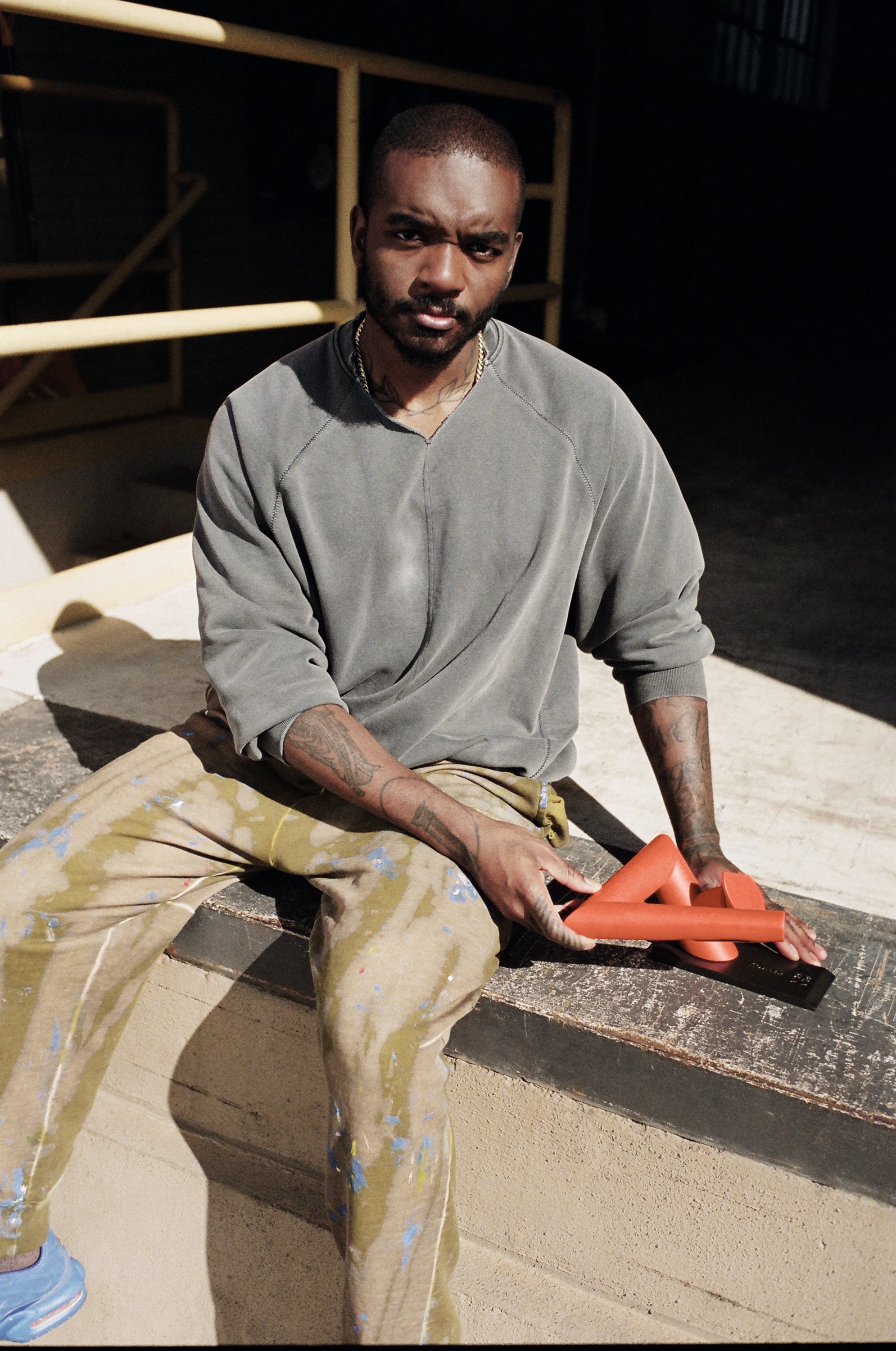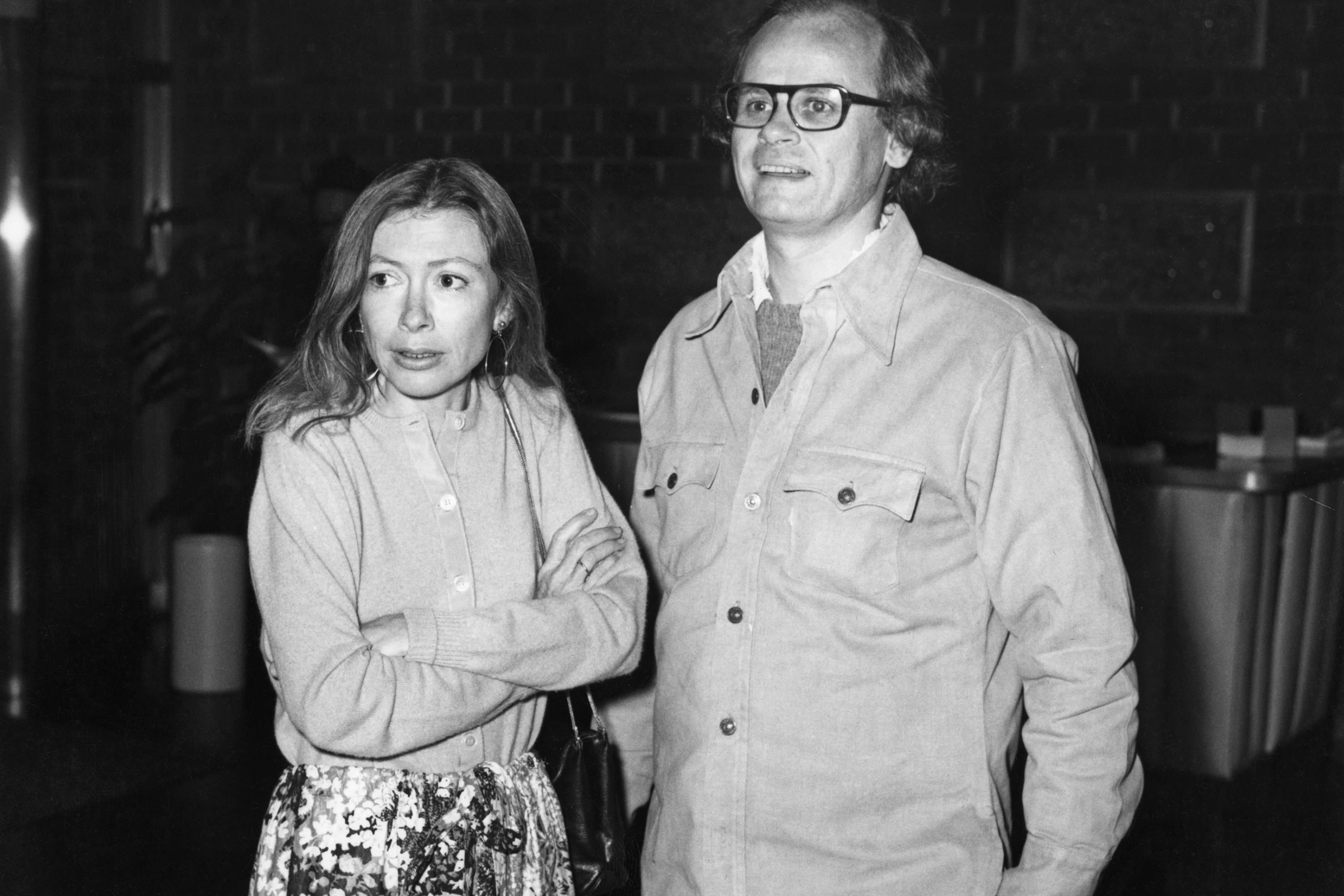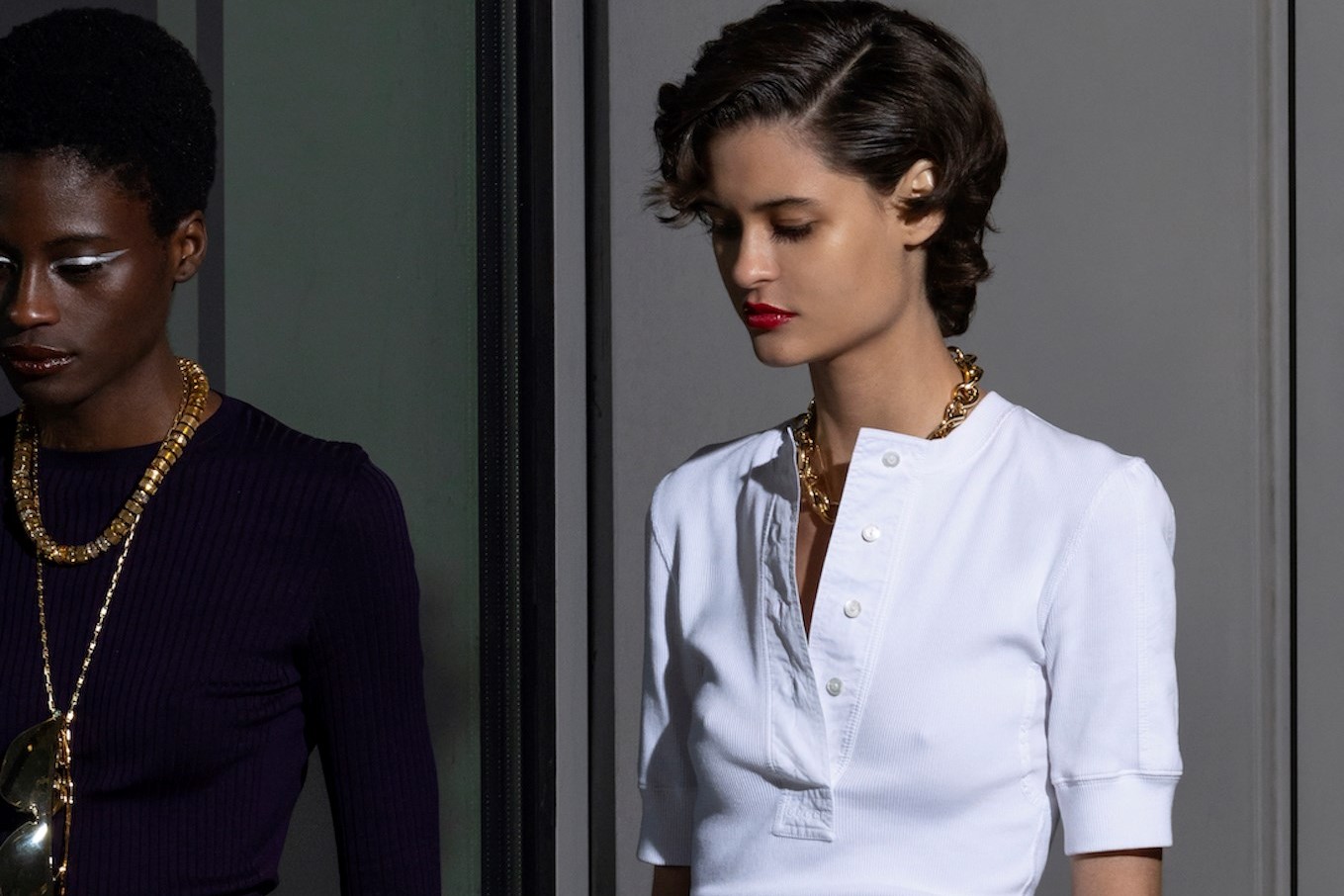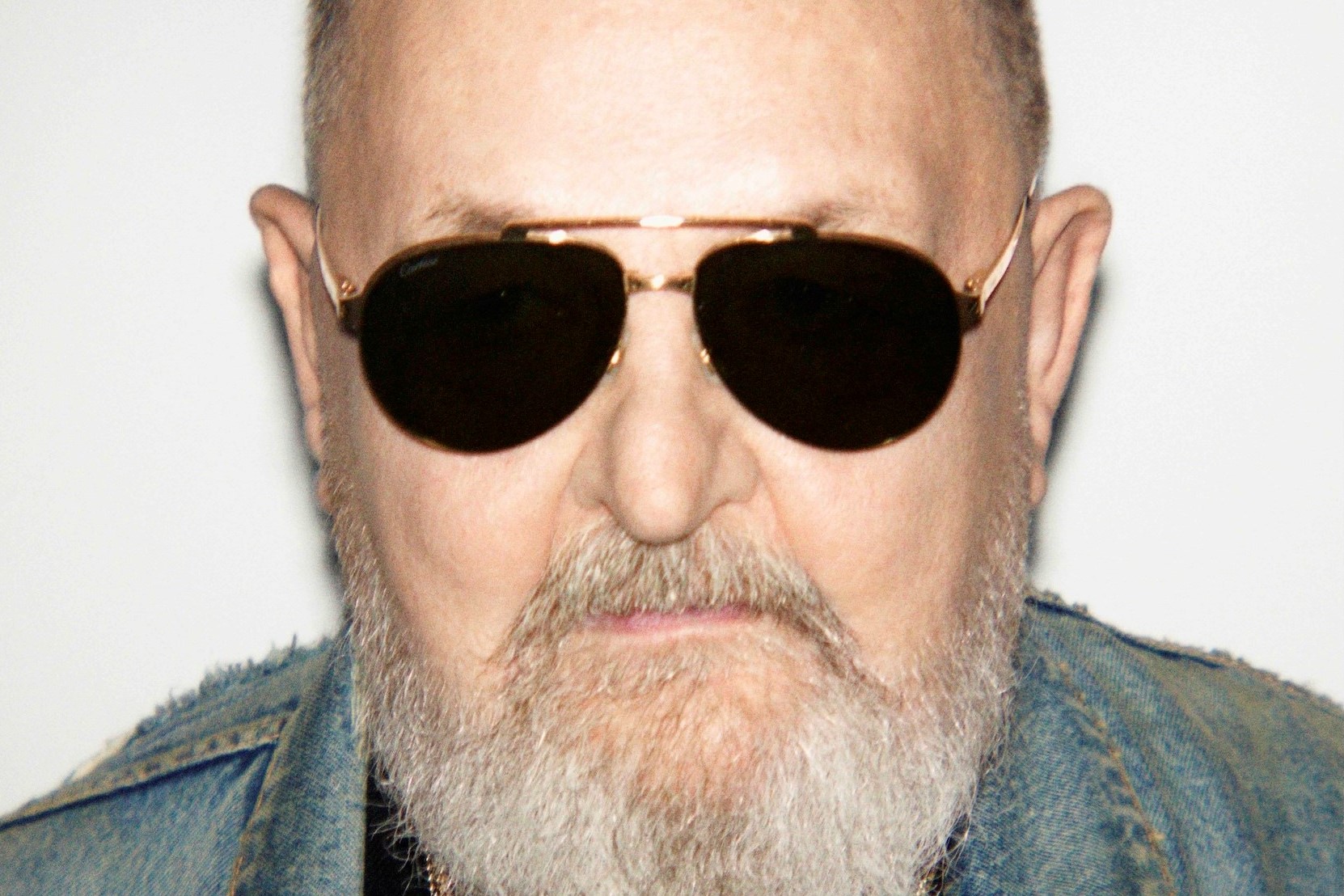Art historian, curator and writer Alayo Akinkugbe is behind the popular Instagram page A Black History of Art, which highlights overlooked Black artists, sitters, curators and thinkers, past and present. In a new column for AnOthermag.com titled Black Gazes, Akinkugbe examines a spectrum of Black perspectives from across artistic disciplines and throughout art history, asking: how do Black artists see and respond to the world around them?
Samuel Ross is a creative all-rounder with an expansive practice that traverses painting, sculpture, installation art, product design, fashion design and furniture – or ‘functional sculpture’, in his own words. Born in Brixton, and based between London and Northamptonshire, Ross has been creating objects all his life, from pin-hole cameras with his father as a child to his recent benches for Miami’s design district.
Ross founded the menswear label A-COLD-WALL* in 2014, the brutalist aesthetic of which runs throughout his creative practice today. He has collaborated with innumerable brands, and his work sits in the collections of six international museums. As a result of the growth of A-COLD-WALL*, Ross is continually able to give back to his contemporaries and younger creatives, through Black British Artist Grants – now in its fourth iteration – which aims for the advancement of Black British and POC artists’ careers.
In his most recent collaboration with Kohler, unveiled at Miami Design 2023, Ross’ industrial design studio SR_A produced an innovative new faucet with an angular, playful form in industrial Haptic Orange, the vibrant signature of Ross’ practice.
In the following 50 questions, Samuel Ross shares his creative influences, from Ryuichi Sakamoto to Barbara Hepworth, stresses the importance of family time, and shares his memories of friendship and work with the late Virgil Abloh.
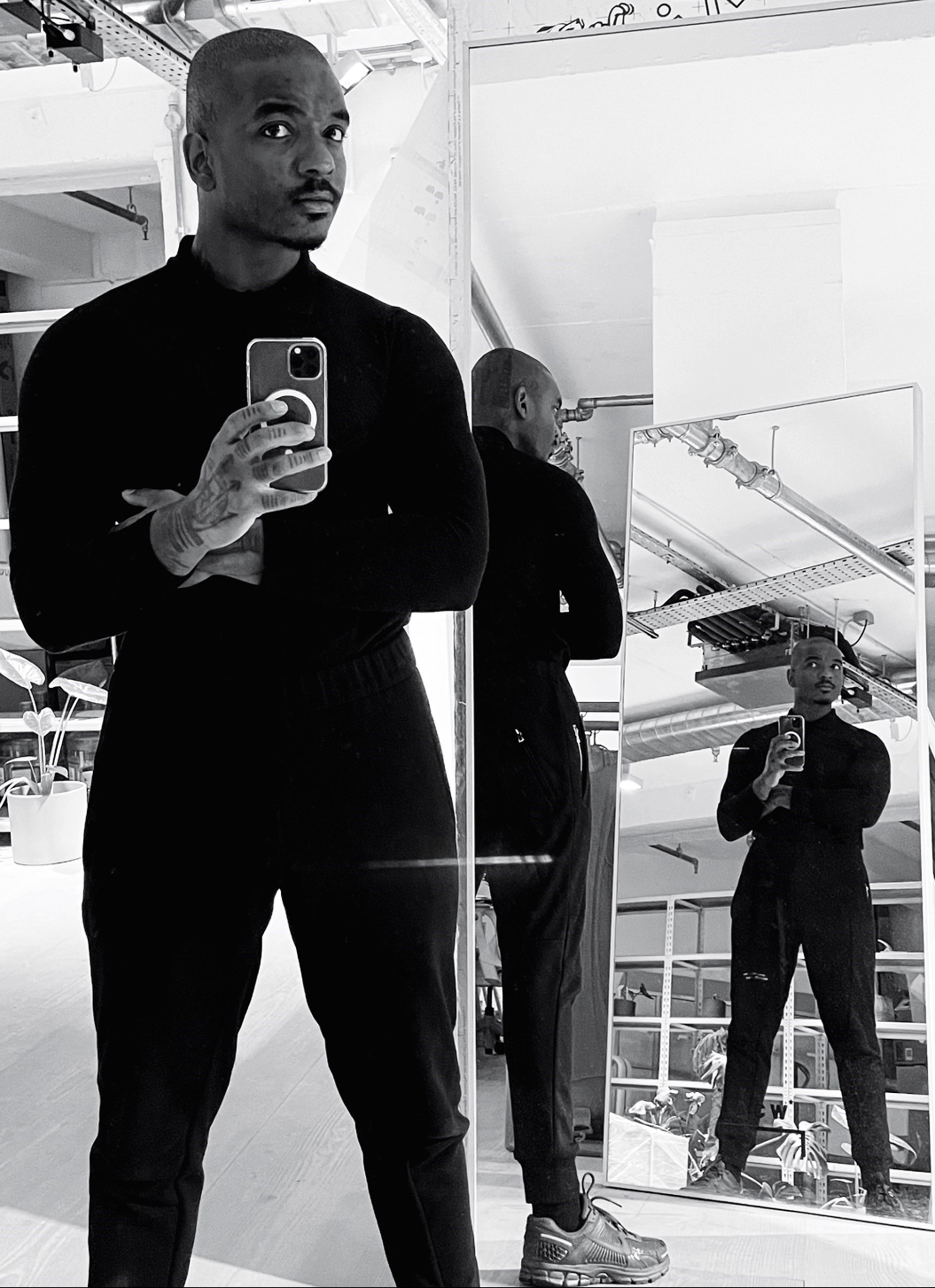
1. How are you feeling today? I’m feeling good.
2. Where are you right now? At the studio in central London.
3. What is the weather like? Sharp and bright.
4. Can you describe the view from your window? Postmodern.
5. What have you been listening to recently in the studio? Andre 3000, just before this conversation.
6. What does a day in the life of Samuel Ross look like? Rhythmic.
7. What time of day are you most productive? I usually work for 11 hours a day.
8. What is your main source of inspiration? My children.
9. Where did you grow up? I grew up between Brixton and Northamptonshire.
10. What was the best part? Having the balance of both.
Do you prefer designing furniture or fashion? “Functional sculptures and garments both serve the body, I see no hierarchy“ – Samuel Ross
11. What do you like about living in London? The reactivity of the city.
12. What do you dislike about living in London? The civil engineering needs maintenance.
13. Would you want to live anywhere other than London? I live between London and the countryside.
14. Do you feel connected to your Caribbean heritage, as a Londoner? This city is my birthplace. My earliest and most significant memories are of early-90s Brixton, alongside lengthy spats across the islands of St Vincent and Barbados. I live through the reality of my causal existence; my connection has never really been a point of questioning, it’s more of an acute understanding of my existence, than a dislocated voyeurism. For this, I am quite fortunate.
15. Do you prefer designing furniture or fashion? Functional sculptures and garments both serve the body, I see no hierarchy.
16. Is the world of art and design becoming more inclusive? In the art world there is increasing merit, design has a longer way to go.
17. What was the impetus behind starting Black Artist Grant? Documenting generational Black-British artists, without a publication or DEI (diversity, equity and inclusion) agenda.
18. What drove you to start making ‘fine art‘, in addition to design? I see no difference, it‘s simply context, location and literature applied to each form. Serving the body and nourishing the soul come first.
19. Favourite designers and artists, from now or the past? Hiroki Nakamura, Massimo Osti and Issey Miyake. Theaster Gates and Frank Bowling. Ben Gorham, Ramdane Touhami and Yi Ng are friends who I‘m fortunate to have had inspiring dialogues with surrounding objects and mythology.
20. Earliest memory of engaging with design? Building pinhole cameras with my father and religiously visiting computer fairs to fuel our home builds, searching for physical CPU chips and RAM.
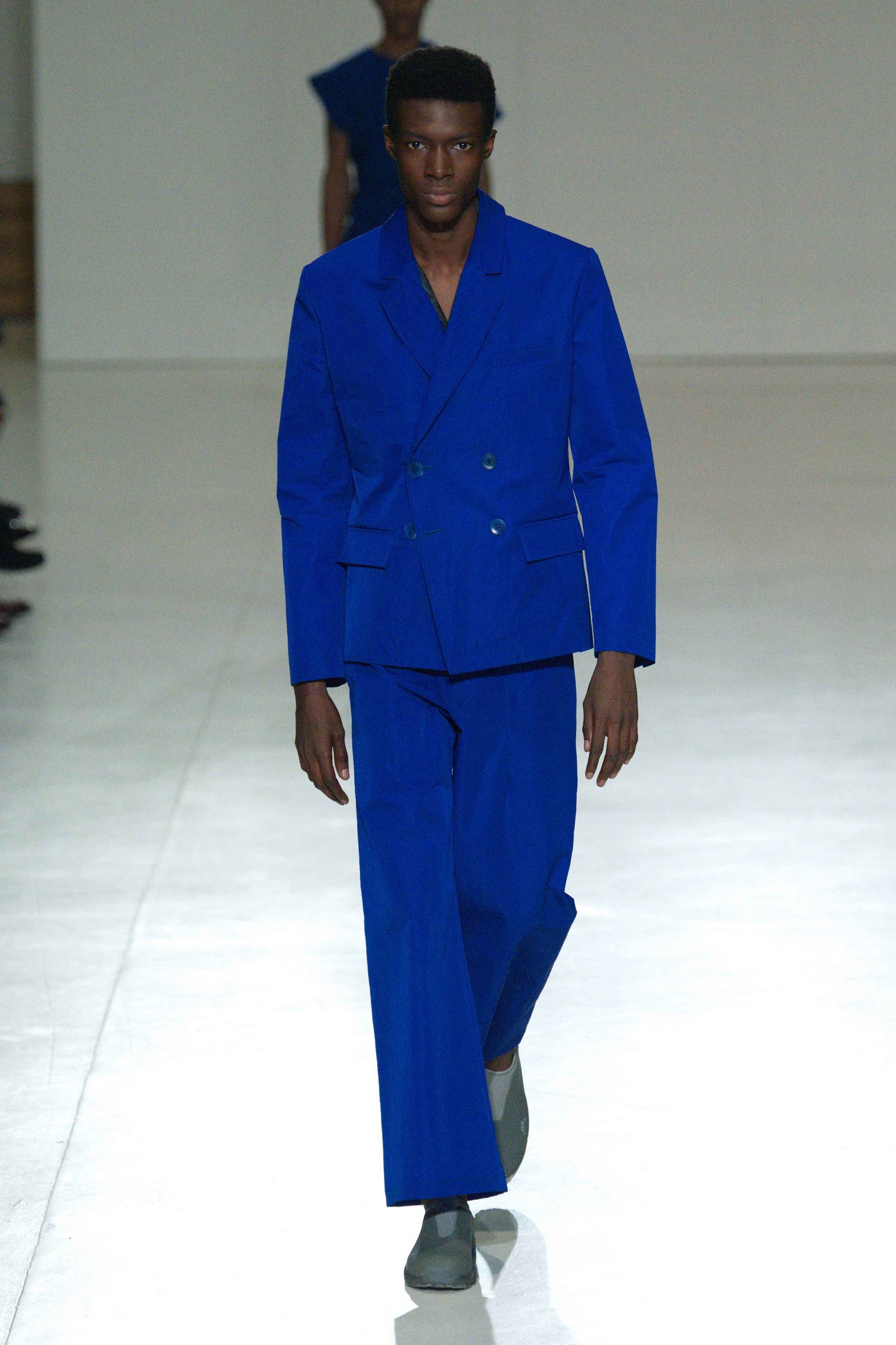

21. What draws you to designing and making things? It’s always been a part of my life.
22. Did you grow up in a creative household? I was lucky to grow up in a two-parent household until I was 17, where my creativity was encouraged.
23. What was the first artwork you made? The threshold has no start or endpoint.
24. Can you tell us about your commission for Miami Design District? I am the first British artist to be commissioned to create public works for the Miami Design district.
25. You were friends with and worked with the late polymath, Virgil Abloh. What did you learn from him? Definite optimism, applied hours are relevant collateral, the strength of the outlier.
26. What do you miss most about Virgil? Our last in-person conversation was actually in this studio, when I gave him a copy of my book. I miss our diagonal and lateral conversations, from design thinking (the applied theory), to ultra-niche pop-culture references, such as Pastor Tobi’s fascination with LV MADE, to Du Bois and Robert Irwin (RIP), to AmyO’s YouTube channel, producing early 2000s The Neptunes and NERD drum loops, to triplex paper construction techniques and GF Smith paper stocks, to a shared appreciation of Henry Moore’s enrichment of public space.
27. What is your dream collaboration? Having a family estate and passing things down to my children, ensuring my bloodline and the wider community can be supported.
28. Has anything taken you by surprise recently? The degree to which Black artists and designers go unrecognised.
29. What books inspire you most? I read lots of memoirs.
30. What have you been reading recently? [Olaudah] Equiano’s memoir, The Interesting Narrative of the Life of Olaudah Equiano (1879).
Has anything taken you by surprise recently? “The degree to which Black artists and designers go unrecognised“ – Samuel Ross
31. What film inspires you most? Spike Lee’s Malcolm X, with Denzel Washington. I would say that it changed my life. I remember watching it in the 90s and trying to post it to my friend who lived in the countryside.
32. Is there anything you’ve watched recently and enjoyed? I’ve been re-watching Atlanta as a way to disengage from work at the end of the day, which has been fun, and it helps me get to sleep.
33. Which visual artist inspires you most? British sculptors of the 1940s and 1950s, particularly Barbara Hepworth and Henry Moore.
34. What do you like about their work? In that period you begin to see spirituality returning to British culture, the idea that a totem can exist in a public space.
35. Which musician inspires you most? John and Alice Coltrane, respectively, and Ryuichi Sakamoto.
36. When do you feel happiest? When I’m with my immediate family; my wife and my children.
37. Where do you feel most at home? When I’m with my children – it’s more of a feeling than a location.
38. Where are you most able to work? A studio to which only I have the keys. It has a side table, two benches and an outdoor space.
39. Highlight of your career so far? Recent museum acquisitions [of my work].
40. What is the most spiritual place you know? The Caribbean. Interestingly, in Equiano’s memoir, it’s the one place that he wasn’t willing to travel back to.

41. What was the last picture you took on your phone? The last screenshot is of a new Hublot watch and the last photo is a woven label for garments that I’m working on.
42. If you could be transported back in time, who would you most like to meet? I would choose not to go back in time.
43. Do you have any pets? No.
44. Do you celebrate Christmas? We still do, actually.
45. What are your traditions around this time of year? I’d say family time.
46. What are you most excited about in the upcoming months? Acquiring a new piece of land, getting the keys, building studios and providing employment to people who are very skilled, but live outside of London.
47. What do you hope people will take away from engaging with your work? Society determines what it wishes to. I have no time to ponder expectation.
48. What’s the best piece of advice you’ve received? There’s not one single piece, more so an understanding of this particular moment in time.
49. In what way? Time and generations prior remain sharp reminders to revel and leverage the liberties this day and age can offer.
50. Where does that understanding come from? From many conversations over the past ten years.
The limited-edition faucet by Kohler x SR_A is on show at Kohler’s booth at Design Miami, from 6 – 10 December 2023.
